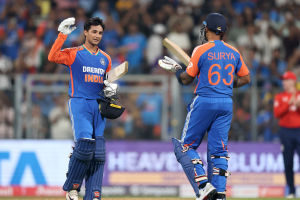
Soccer, also known as football in many parts of the world, is one of the most popular sports globally. However, while many of us enjoy watching or playing the game, not everyone is fully aware of the official rules that govern it.
The regulations are designed to ensure fairness, maintain order, and enhance the excitement of the game. Let's take a deep dive into the essential rules every soccer fan should know.
Rules of Soccer : Soccer Rules and Regulations
video by Mr.Animate
The Soccer Field: Size and Markings
A standard soccer field is rectangular, with specific dimensions set by FIFA. The field length ranges from 90 to 120 meters, while the width falls between 45 and 90 meters. For international matches, the length is typically between 100 and 115 meters, with a width of 64 to 75 meters. The field must have white boundary lines, including the center line, goal lines, and penalty areas. Additionally, artificial turf fields must be green to meet official requirements.
Team Composition and Player Requirements
A soccer match consists of two teams, each with a maximum of 11 players, including one goalkeeper. A team must have at least seven players to continue the game. If a team falls below this number due to injuries or penalties, the match will be terminated, and the team with insufficient players will forfeit. Goalkeepers are the only players allowed to use their hands within the penalty area.
Mandatory Player Equipment
Players are required to wear jerseys, shorts, socks, shin guards, and cleats. The jersey must have sleeves, and teams must wear distinct colors to differentiate themselves from opponents and referees. Goalkeepers must wear colors that stand out from both their teammates and referees. Shin guards must be fully covered by socks and made of rubber, plastic, or other protective materials.
Substitutions: How Many Are Allowed?
Each team is allowed up to five substitutions per match, an increase from the previous limit of three. In tournaments or competitions, teams may be permitted additional substitutions during extra time. If a team fails to notify the referee before making a substitution, the change may be disallowed.
Game Duration and Breaks
A standard soccer match consists of two 45-minute halves, with a 15-minute halftime break. If necessary, referees may add stoppage time at their discretion to compensate for injuries, substitutions, or other delays. In hot weather conditions, hydration breaks may be introduced to allow players to rest and receive tactical instructions.
How a Match Starts and Resumes
Before the match begins, a coin toss determines which team chooses their side of the field or takes the first kick-off. The team that loses the toss gets the kick-off at the start of the second half. The game restarts with a kick-off after every goal, at the beginning of the second half, and in extra time if applicable.
Live Ball vs. Dead Ball Situations
A soccer ball is considered in play unless it has fully crossed the goal line or sideline, whether on the ground or in the air. If the ball rebounds off the goalpost or referee and remains within the field, play continues. A dead ball situation occurs when the referee stops the match for fouls, injuries, or other infractions.
Scoring: When Is a Goal Valid?
A goal is awarded when the entire ball crosses the goal line between the goalposts and beneath the crossbar. However, it must not be the result of any rule violations. If the ball has only partially crossed the line, play continues. Thanks to goal-line technology, controversial "ghost goals" have become less frequent in modern soccer.
Offside Rule: Avoiding an Unfair Advantage
A player is in an offside position if they are nearer to the opponent’s goal than both the ball and the second-last defender at the moment the ball is played to them. However, being in an offside position alone is not a violation. A player is only penalized if they gain an advantage, interfere with play, or obstruct an opponent. Exceptions include receiving the ball directly from a goal kick, throw-in, or corner kick.
Fouls and Misconduct: When Does the Referee Intervene?
Referees enforce the rules by monitoring player behavior. If a foul is minor, the referee may issue a verbal warning. More serious infractions result in a yellow card, while a second yellow or a severe offense leads to a red card, meaning the player must leave the field immediately. A team reduced to fewer than seven players automatically forfeits the match.
Penalties for Serious Offenses
Teams can also face severe consequences for violent conduct, attacking referees, or inciting crowd disturbances. In such cases, the match may be suspended or terminated, with the offending team losing by default.
Final Thoughts: Understanding the Rules Makes the Game More Enjoyable
Soccer is more than just a sport—it’s a game of strategy, skill, and discipline. By understanding the rules, we can better appreciate the tactics and decisions made on the field. Lykkers, whether you’re a casual viewer or an aspiring player, knowing these regulations will deepen your love for the game. What’s a rule that has surprised you before? Let’s discuss in the comments!


